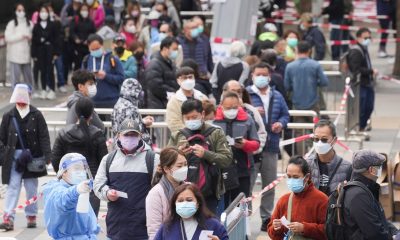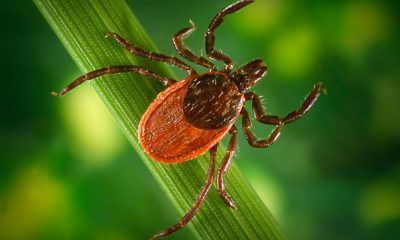Amid the tripledemic, there is another health concern that experts fear could lead to another spike in cases among kids. This has led authorities to announce a health alert for parents to take caution and be on the lookout for a group of bacteria that could be after their children.
Last week, the Centers for Disease Control and Prevention (CDC) issued a Health Alert Network (HAN) Health Advisory notifying clinicians and public health experts of a recent rise in pediatric invasive group A streptococcal infections.
The spike was first reported in November among young patients at a hospital in Colorado. Though the reported cases were seen in children, the CDC said that the increased seasonal risk for the group A strep infection was for all age groups.
Group A streptococci are bacteria commonly found in the throat and on the skin. Many people carrying the bacteria do not get sick. When a person becomes ill due to the bacteria, they present various symptoms, including fever, swollen glands, sore throat, body ache, nausea, vomiting and rash, according to the United Kingdom National Health Service (NHS).
Most strep A infections are mild and not serious. In these cases, patients are treated with antibiotics. However, there are cases when the bacteria become invasive and lead to serious problems. In children under the age of two, an infection could trigger skin conditions and even pneumonia.
The CDC has listed all of the diseases that group A streptococci are known to cause. Learn about their symptoms and treatment options below.
Strep throat
Though generally a mild condition, it can be very painful and disturbing. Common symptoms include pain when swallowing, fever, red and swollen tonsils, petechiae or red spots on the roof of the mouth and swollen lymph nodes in the neck. Doctors treat strep throat with antibiotics.
Scarlet fever
This is another mild infection that usually begins with a fever (101°F or higher) and sore throat. Common symptoms include a whitish coating on the tongue early in the illness and strawberry or red and bumpy tongue later on, red skin rash, swollen glands in the neck, headache, nausea, vomiting and abdominal pain. Antibiotics are also used to treat this disease.
Impetigo
This mild infection is characterized by red, itchy sores around the nose, mouth, arms and legs that break open and leak a clear fluid or pus. Impetigo treatment involves topical and oral antibiotics.
Necrotizing fasciitis
This infection spreads rapidly and is characterized by red, warm or swollen skin, severe pain in the infected area and fever early on. Meanwhile, later symptoms include blisters, skin discoloration, dizziness, fatigue and diarrhea. Mild cases are treated with antibiotics. In more serious cases, surgery is required. A blood transfusion may also be needed.
Cellulitis
This condition appears as a red, swollen and painful area of skin that is tender to the touch and warm. It is often found on the feet and legs. The skin often resembles the peel of an orange. In some cases, patients experience fever and chills. Treatment options include oral and intravenous antibiotics.
Streptococcal toxic shock syndrome
This serious infection often starts with fever, chills, muscle aches, nausea and vomiting. Around 24 to 48 hours after the onset of symptoms, the patient’s blood pressure lowers. Once this happens, the condition quickly worsens and leads to complications like tachycardia, tachypnea and organ failure. Immediate hospital care is needed for this condition.
Rheumatic fever
This condition can inflame the heart, joints, brain and skin. This is an immune response to an earlier infection — strep throat or scarlet fever that has not been treated properly. Symptoms include fever, arthritis, fatigue, chorea, chest pain, shortness of breath and fast heartbeat. Patients may also have a heart murmur, an enlarged heart and fluid around the heart. Aside from antibiotics, treatment options focus on managing the symptoms. When left untreated, rheumatic heart disease may develop, and this will require heart surgery.
Post-streptococcal glomerulonephritis
This is a kidney disease that is also a response to an earlier group A strep infection — strep throat, scarlet fever, or impetigo. Symptoms include dark, reddish-brown urine, edema in the face, hands and feet, decreased amount of urine, fatigue, hypertension and mild anemia. Treatment involves antibiotic use and management of blood pressure and swelling.
















